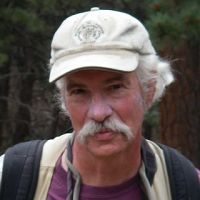Dethier et al., 2012
Using the accumulation of CBD-extractable iron and clay content to estimate soil age on stable surfaces and nearby slopes, Front Range, Colorado.
Dethier, D. P., Birkeland, P.W., and McCarthy, J. A. (2012)
Geomorphology 173-174: 17-29
-
Boulder, INVESTIGATOR
Abstract
In many transport-limited environments, morphology, pedogenic iron and clay content provide a basis for estimating the exposure age of soils and associated landforms. We measured citrate-buffered dithionite (CBD)-extractable Fe (Fed) and clay concentration in fresh rock, saprolite, morainal and colluvial materials, and soil horizons from stable surfaces and hillslopes in the Colorado Front Range. Fresh igneous and high-grade metamorphic rocks contain <1% Fed and 1 to 5% clay. As bedrock and surficial deposits age, Fed and clay accumulate from weathering and dustfall. Late Holocene regolith at warm, dry sites contains small amounts of Fed and clay, but relatively moist soils developed on early Holocene cirque deposits contain as much as 1.5% Fed and 8% clay. Concentrations and total profile accumulation of Fed and clay increase with age in soils developed on stable surfaces of glacial deposits as old as ~130kyr. On stable sites, Fed and clay accumulation from weathering and dust is ~0.02gcm⁻²kyr⁻¹ and ~0.2gcm⁻²kyr⁻¹, respectively. We used the Fed and clay inventory in soil profiles at dated, stable Front Range surfaces to calculate accumulation functions, which allowed us to estimate soil age at hillslope sites. Heterogeneous parent material, particularly on hillslopes, and climate-related effects add to variability in measured relations. Mobile regolith in Gordon Gulch, one of the Boulder Creek Critical Zone Observatory (CZO) catchments, yields profile ages from about 0.5 to 5×10⁴yr, comparable to values measured using other techniques. Calculated profile ages are older on a north- vs. south-facing slope and increase from the drainage divide to the footslope. Ages calculated for stabilized colluvium and well-developed buried profiles at nearby hillslope sites (Lefthand, Ward and Rollinsville) suggest that these soils have stabilized over periods >10⁵yr. In the absence of radiometric ages, the accumulation of Fed and clay in soils on stable sites and hillslopes provides a useful, local chronofunction for 10³ to ~3×10⁵yr. Local footslope thickening of mobile regolith, buried soils, and areas of Fed- and clay-rich stabilized colluvium suggest that steady-state models of hillslope regolith must be modified to account for observed soil properties.
Citation
Dethier, D. P., Birkeland, P.W., and McCarthy, J. A. (2012): Using the accumulation of CBD-extractable iron and clay content to estimate soil age on stable surfaces and nearby slopes, Front Range, Colorado. Geomorphology 173-174: 17-29. DOI: 10.1016/j.geomorph.2012.05.022
 This Paper/Book acknowledges NSF CZO grant support.
This Paper/Book acknowledges NSF CZO grant support.
Explore Further

